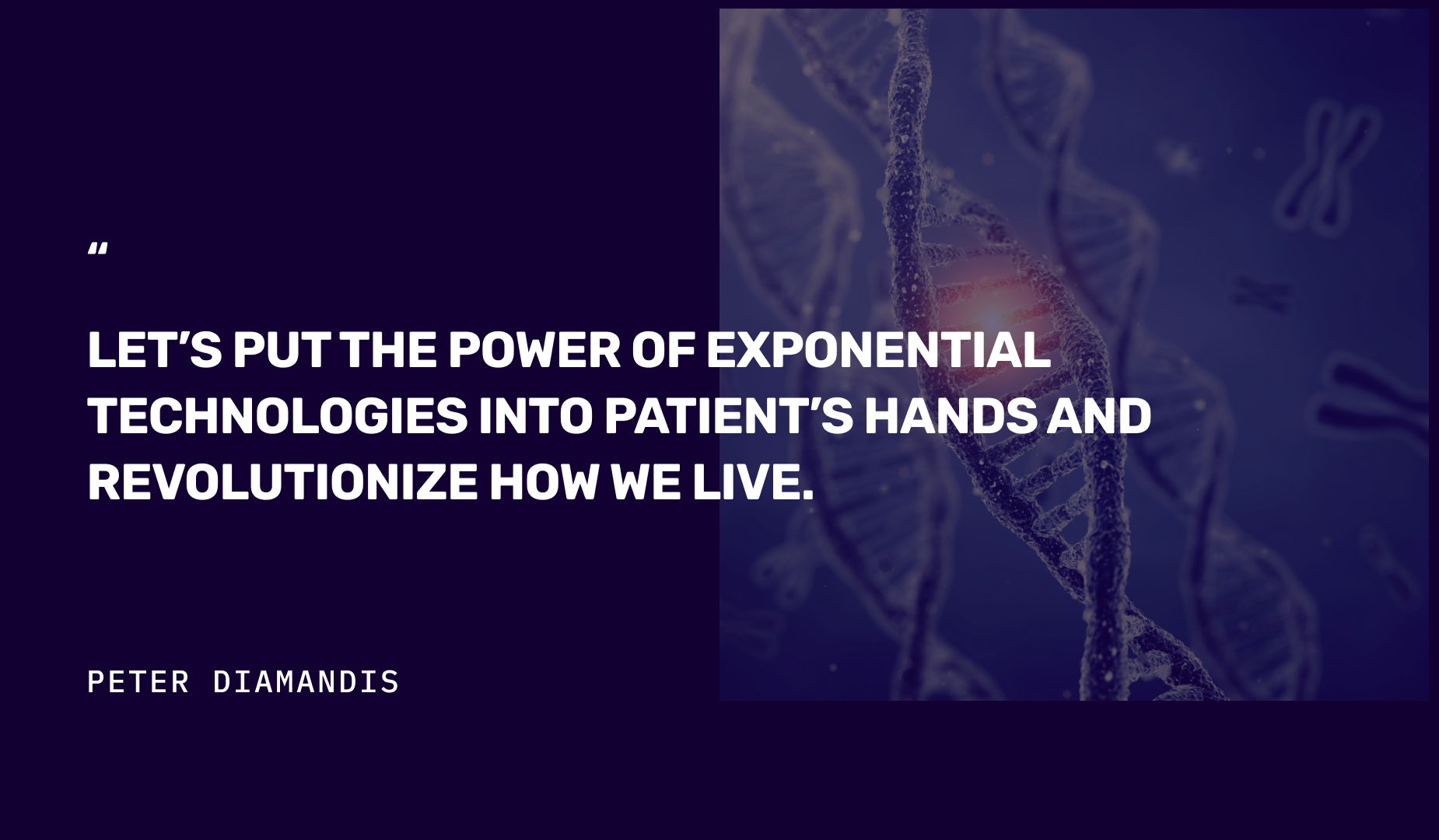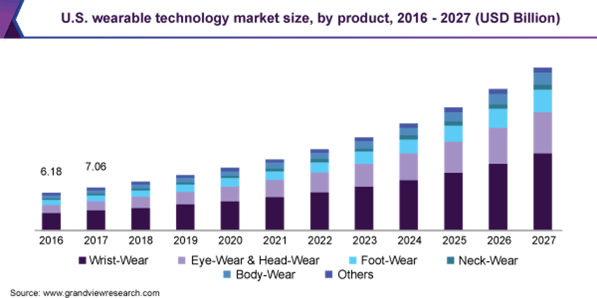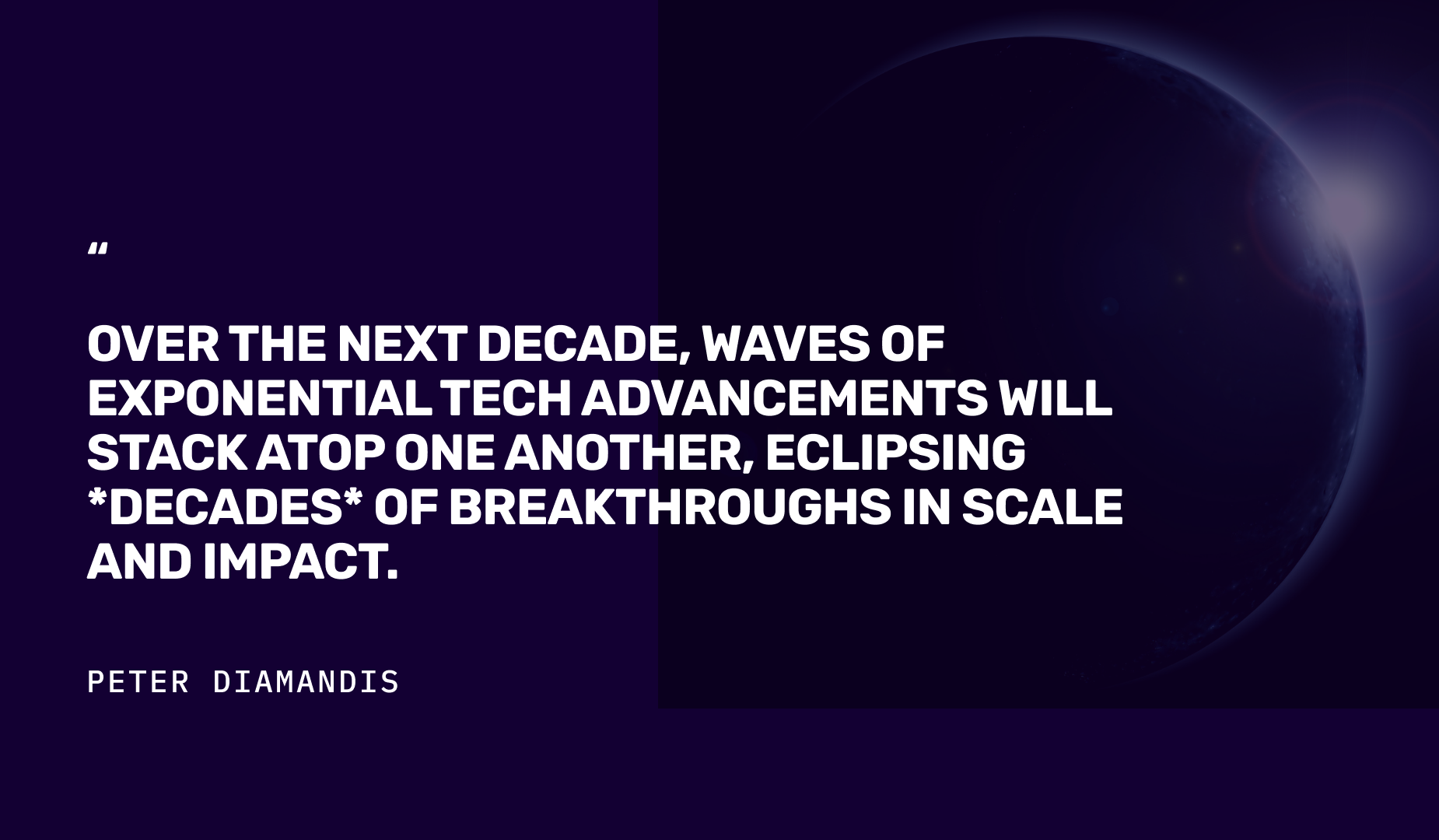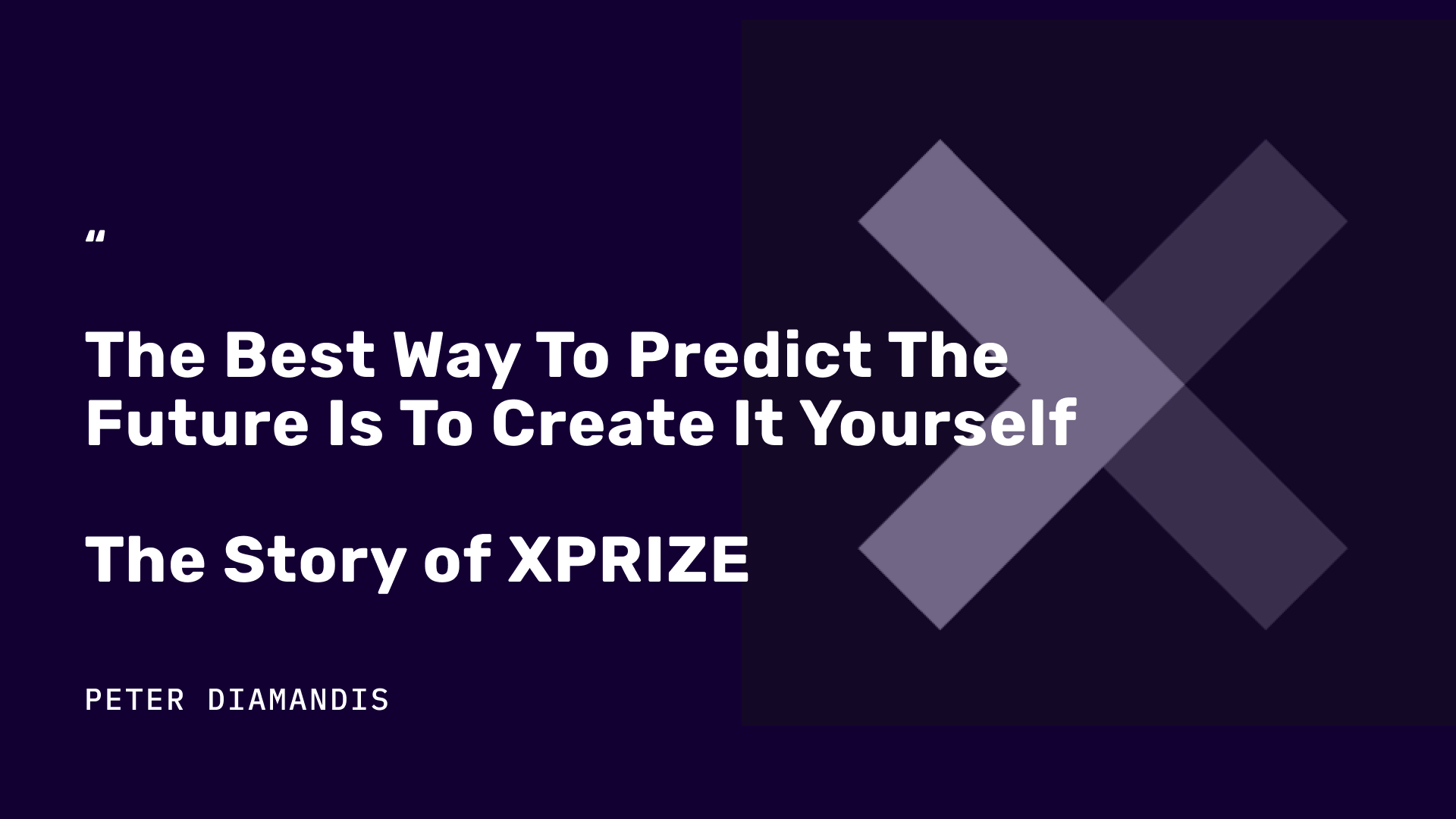
Today’s typical medical check-up is based largely on a physical exam developed in the 1820s using tools that haven’t been upgraded in over a hundred years.
And what passes as “a comprehensive health check” happens only once a year, giving us a mere snapshot of our actual health. A lot can happen within a year’s time.
For an exponentially accelerating world in which our phones, computers, and cars update their software every few weeks, the idea of checking in on your health on an annual cadence is abysmal.
The problem is that our bodies are accelerating at such a rapid rate that even a microscopic change like a gene deletion in a single cell can lead to cancer––sometimes in a matter of weeks or months. I’ve seen a patient deteriorate from a triathlete champion to a stage IV pancreatic cancer patient nearing the end of her life within 6 months. It’s terrifying.
Now let’s imagine a different world.
What if you could monitor your health constantly and in real-time? Use machines to detect subtle changes in your body and your blood chemistry so we can catch diseases before it’s too late? Before serious disease has the opportunity to manifest inside of you.
In this blog, I’ll explore advancements in diagnostics for two areas:
(1) Telehealth
(2) Continuous health monitoring
Together, these advancements will ultimately allow us to become the “CEOs of our own health.” They will extend our healthspan and lower our overall medical costs by an order of magnitude. (Note: According to a report from the Medicare, about a quarter of the total Medicare budget is spent on services for beneficiaries in their last year of life, 40% of it on the last 30 days.)
Let’s dive in...
(This blog is written by Peter Diamandis, MD and Felicia Hsu, MD)
P.S. Send any tips to our team by clicking here, and send your friends and family to this link to subscribe to Abundance Insider.
MAKING THE DOCTOR’S VISIT VIRTUAL
According to a McKinsey report on healthcare in 2020, COVID-19 caused a massive spike in telehealth services, from a mere 11% of US consumers to 46% by the end of 2020.
The biggest concern across patients and providers was how to conduct a physical exam without touching a patient. How can you hear someone’s lungs over a video call? Feel how much swelling someone has in their legs? Hear a heart murmur?
But as we soon learned, there are several companies giving providers all the information they need virtually.
Before patients have the chance to see the doctor, they have their vitals taken. HD Medical has taken this virtual with their newest creation, HealthyU, a credit card-sized device that can instantly measure their heart rate, temperature, oxygen saturation, and heart sounds with the touch of their finger and make it all accessible to the provider in real-time. Within this small device, they’ve managed to pack in a remote EKG, which is a physician’s roadmap to a patient’s heart health and can help catch serious diseases like arrhythmias and heart attacks.
Now what about the physical exam? Tyto has created a palm-sized handheld exam kit and app that lets you perform your own guided medical exam that the physician can see remotely. Have a sore throat? Tyto’s camera can look clearly into the back of your throat. Having shortness of breath or chest pain? Tyto turns into a stethoscope you can just place on your chest and back so the physician can virtually listen to your heart and lungs.
These technologies will play a monumental role in making telehealth more of a norm in healthcare moving forward. But now that we’ve addressed the doctor’s visit virtually, what about the other 364 days you’re not seeing a doctor?
CONTINUOUS HEALTH MONITORING
In hospitals, patients are hooked to so many machines that will sound an alarm as soon as their heart rate goes even one beat out of range.
These days, data is our best friend. The more we have, the better we’re able to predict outcomes and be better informed. And what’s better than getting rid of the unknown, especially when it comes to our own health?

A Grandview market analysis report valued the global wearable technology market size at $32.6B in 2019, and projected for it to expand at a rate of 15.9% from 2020 to 2027.
There’s no disputing that consumer brands like Apple Watch, Fitbit, and Garmin have taken over the wearable health market. Their products give us an impressive amount of data––heart rate, sleep quality, calories burned. Athletes wear textiles flooded with sensors to give performance feedback.
But I want to turn your attention to five other equally impressive ways of watching your health at a granular level of detail.
(1) Can we predict when we’re getting sick with the flu or even Parkinson’s? The Oura Ring is one of most promising wellness rings, covering an impressively wide range of parameters using infrared LEDs, accelerometers, gyroscopes, and body temperature sensors. Initially designed to monitor quality of sleep, it quickly expanded to measure body temperature, heart rate, and respiratory rate. After the NBA resumed its season during COVID-19, NBA players were offered the Oura Ring to monitor their health. Through a joint study with UCSF, it was able to detect common COVID-19 symptoms such as fever, cough, fatigue, and difficulty breathing three days earlier with 90% accuracy. It’s even able to use someone’s sleep movements to predict early onset of neurodegenerative disorders such as Parkinson’s.
(2) Can we address the adult obesity crisis? Adult obesity has reached a record high with a prevalence of 42.4% in the US. Its partner in crime, diabetes, stands at 10.5% of the US population. Nutrition and dietary habits play a large role in both diseases. DexCom boasts an impressive continuous glucose monitoring wearable sensor that takes finger pricks and guessing glucose levels completely out of the equation. It allows patients to see their glucose trends throughout the day, link it with their dietary habits and help them achieve tight glucose control.
(3) Can we prevent falls, the leading cause of injury deaths in adults over 65? These falls can lead to brain injuries, fractures, and immobilization that often lead to a spiral of other conditions. To address this, Nobi, acts as an extra pair of eyes at home. While it is not a wearable, it is a ceiling mounted smart lamp that detects falls and sends out alerts for help. It also prevents falls with activity monitoring and helpful reminders if it realizes the user is unsteady.
(4) Can we infer contextual information to predict someone’s mental health? Over 20% of adults and 10% of youth experience depression. And these numbers are on the rise. Researchers have applied machine learning methods to continuous sensor data from wearables, smartphone applications, social media, and physical activity to better predict the onset of mental health conditions such as depression and anxiety.
(5) Can we measure our blood pressure at all times? A lab based out of UT Austin made a proof of concept electronic tattoo that can measure continuous blood pressure. It uses an ultra-thin clear plastic film with embedded sensors that can monitor electrical heart signals. This would shift the use of continuous heart monitors from the bulky Holter monitor to a stick-on tattoo.
Sensors and continuous monitoring systems have been developed to non-invasively detect what’s happening in the body in real-time. The field has used creative methods of elucidating human health data––through skin, vibrations, temperature, and interactions with an app.
Technology advancements have occurred in essentially every organ system in our bodies. This list is by no means exhaustive—it is scratching the surface of what the field has already come up with.
CONCLUSION
Technology is increasingly integrated into our lives—Alexa giving us music suggestions, autonomous cars reducing human error accidents, dating algorithms matching us with our other halves. It’s happening in almost unimaginable ways.
Why not tap into that potential for our health?
We envision a world in which devices that monitor our daily behaviors will be able to detect micro-changes and be able to alert us when we’re starting to develop pneumonia, stressing our heart too much, or starting to develop early-onset Alzheimer’s. Medicine is moving away from the annual physical exam and blood work. It’s going to rely on constant monitoring to detect changes that are happening in our bodies every second.
We are in the midst of a data-driven healthcare revolution: an era of abundance during which we’ll obtain a massive amount of health data. In the next few years, we’re going to see data analytics platforms that will help physicians use this mine of data.
This shift will make medicine personalized, predictive, and preventive.
Let’s put the power of exponential technologies into patients’ hands and revolutionize how we live.
Join My LONGEVITY PLATINUM TRIP
Platinum Longevity & Immunology Trip: This August 11-15, 2021 and September 22-26, 2021, I'm taking two groups of VIP entrepreneurs and investors on what I call my “Platinum Longevity & Immunology Trip” to Boston, MA and New York, NY.
Each trip will be a 5-Star (luxury) deep dive to meet 20+ companies, 12+ academic labs / research institutes, and 28+ scientists / physicians and entrepreneurs who are leading the charge against age-related diseases and extending the human healthspan.
My mission is to give you first-hand exposure to the major players, scientists, companies and treatments in the longevity and vitality arena. All your questions answered. Early access to cutting-edge treatments and products. And a behind-the scenes view of tomorrow’s longevity revolution.
Both trips are nearly sold out. To learn more and lock in your seat, check out our website and sign up here!
NOTE: We’ll be launching additional Longevity-focused content in the coming weeks and we’d love to learn about your interest in the topic.
If you’re interested in receiving more content on Longevity, please reply to this email with a brief description of who you are, what Longevity-related topics interest you, and why. We look forward to hearing from you!






